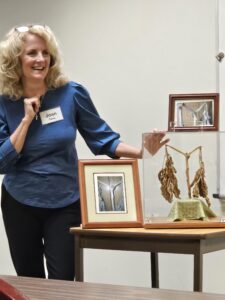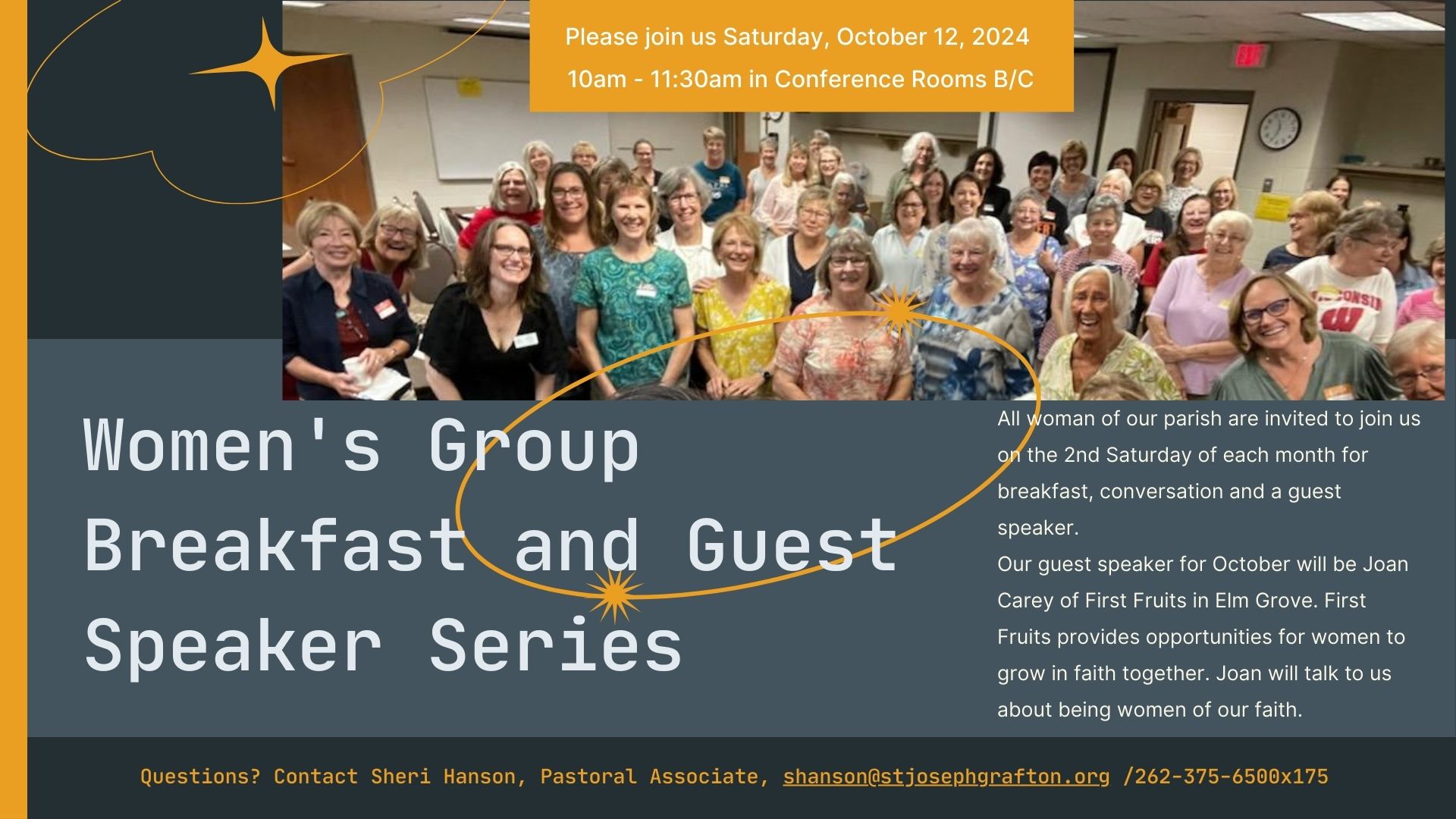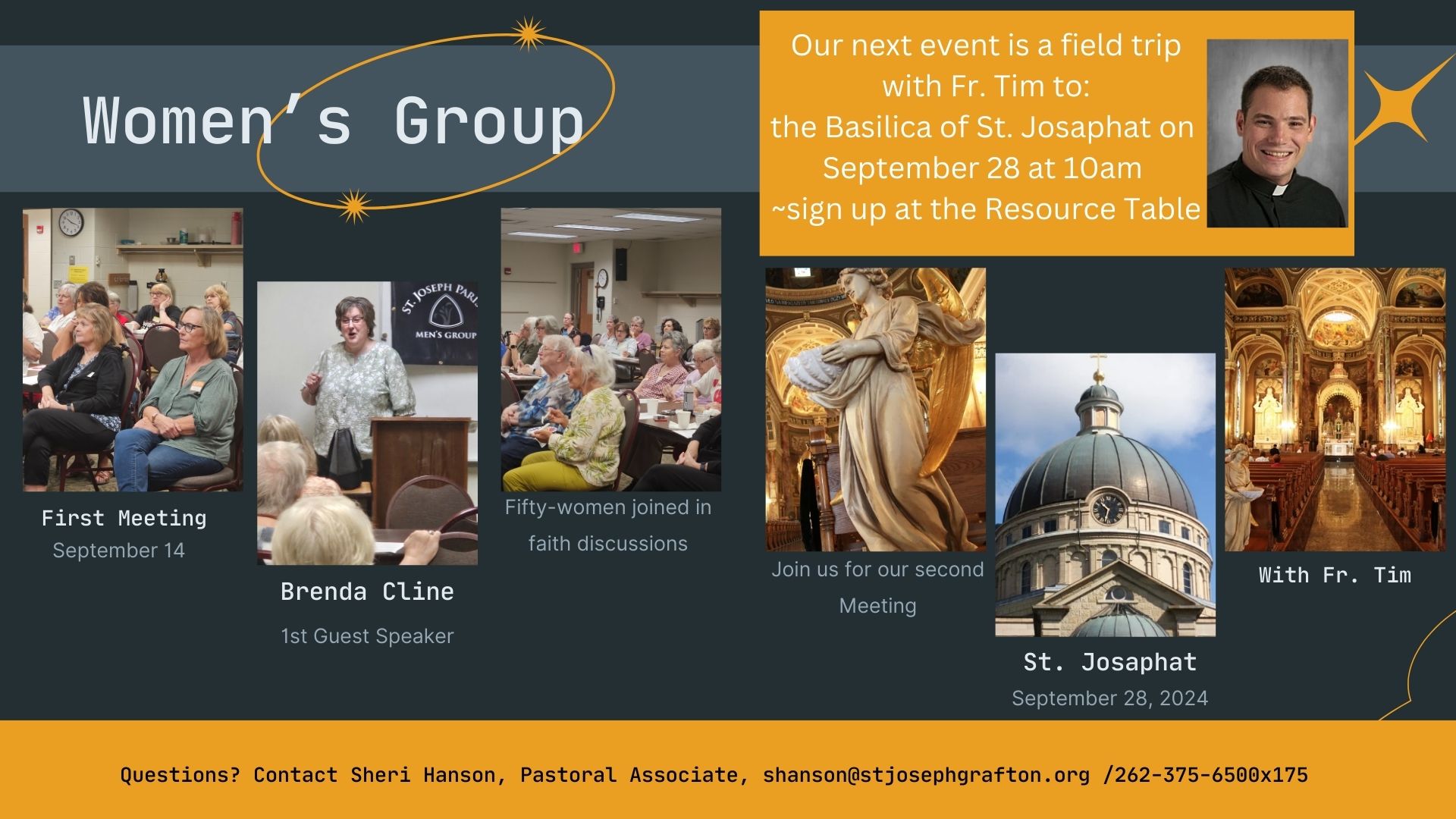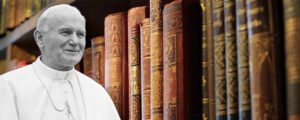And Mary said: My soul proclaims the
greatness of the Lord"
Luke 1:46
Holy Hill
October 26, 2024
Fourteen women from our parish traveled to Holy Hill on October 26. We walked around the grounds, visiting the Stations of the Cross, and then attended Mass together. Please join us for our next event: an Advent Reflection on December 14 at 10am. Hospitality will be provided.
First Fruits - Joan Carey
October 12, 2024
Twenty-eight women attended our Women’s Group on October 12 to eat breakfast and listen to our guest speaker,Joan Carey, from First Fruits.
Joan invited us to look for God everywhere and talked about her own faith journey.She also talked about how she started her ministry, First Fruits, which is a place for women to grow in faith together.
Basilica of St. Josaphat with Fr. Tim
September 28, 2024

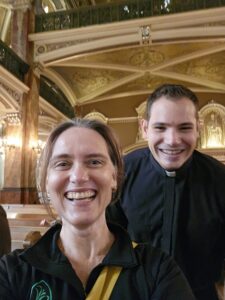

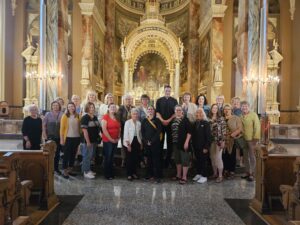
Here are some photos from the Women’s Group field trip to the Basilica of St. Josaphat with Fr. Tim. Twenty-two women joined us. It was great – we had a tour guide for the first 30 minutes and then Fr. Tim shared some of his stories. It was beautiful.
Women's Group Planning Committee
Our group has been busy planning events for the women of our parish. We plan to meet twice a month starting in September.
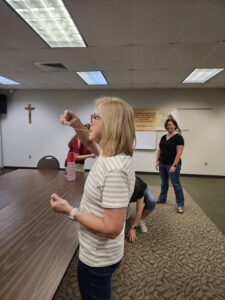


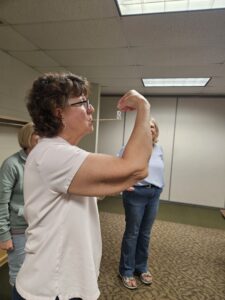

Saturday March 2, 2024
We had 75 women at our breakfast today on Saturday, March 2, 2024

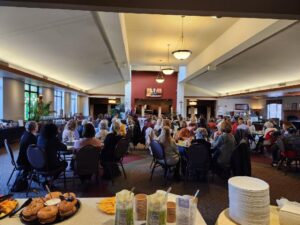
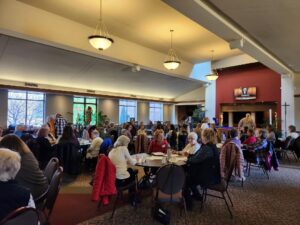
The Woman at the Well - The Road to Emmaus
Dr. Scott Hahn and Rob Corzine discuss the deeper meaning behind the story of the woman at the well.
The Awesome Meaning Behind ‘Blessed Are You Among Women’
Catholic Answers / Joe Heschmeyer
The Awesome Meaning Behind ‘Blessed Are You Among Women’
Catholic Answers / Joe Heschmeyer
Blessed are you among women. It’s a strange blessing: why “among women”? It might strike our modern ears as either an odd bit of feminist agitprop or, alternatively, as a suggestion that women are second-rate: something like, “You’re pretty good . . . for a girl.” But, in fact, there seems to be a shocking meaning lying just beneath the surface.
Who are the only three women in Scripture who were greeted in this way, and what do they have in common? The three women are Jael, Judith, and the Blessed Virgin Mary. What they have in common is something that none of us had ever noticed, but which the devil couldn’t have missed.
What the devil does and doesn’t know
The first thing to know about the devil is that he never experienced the beatific vision. There are two ways that we can know this. First, because, as Aquinas notes, “to see God in his essence, wherein the ultimate beatitude of the rational creature consists, is beyond the nature of every created intellect” (Summa Theologiae I, 62, 2). The angels are created in the highest state of natural beatitude, contemplating God as fully as their created natures permit.
The New Testament is the story of redemption. It is the story of the redemption of all people — men and women — by God. At the center of the redemption, of course, is the Redeemer, Jesus Christ, one with the Creator, the Father, and the Sanctifier, the Holy Spirit. The holy gospels have as their aim to describe the immediate words and deeds of the Redeemer, just as the other books tell of the words and deeds of his apostles and disciples.
To speak of anyone, man or woman, after the advent of the Incarnate Word, is to speak of him or her in relation to that Word. Specifically, the gospels recount a plethora of men and women in Jesus’ life and work, wherein the election of the Father is transubstantiated into Redemption by the Son through the Holy Spirit.
There is no greater exaltation for the human race than that the Son of God should become man and be born of woman. There is no human being closer to God than his mother, Mary, who as the Theotokos bore him in her womb with love beyond all telling. Mary is the most significant woman in the created order and perforce the most significant woman in the Bible.
Mary is the “new Eve,” by whose fiat God’s plan for Redemption is set in motion so that the faults inaugurated by the first Eve might be atoned in her Son. It is at the moment of his sacrificial obedience on the Cross that Jesus entrusts the Church to his mother and his mother to the Church (John 19:25-27). This exaltation of his mother manifests the importance of women in his life and provides the paradigm for his relationship with women of respect and compassion.
There are women at the most significant moments of Jesus’ life. Elizabeth, along with John the Baptist still in her womb, is the first woman (other than Mary) recorded to worship him and recognize the fulfillment of Gabriel’s promise to Mary (Luke 1:42-45).
And it is Rachel’s voice that is intoned to mourn for the Holy Innocents (Matthew 2:16-18; see Jeremiah 31:15; 40:1), whose slaughter by Herod is the prefigurement of Israel’s rejection and murder of the Messiah on the Cross. More women than men stand at the foot of the Cross (Matthew 27:55-56; Mark 15:40-41; Luke 23:49; John 19:25-27).
The activities of more women than men are recorded immediately thereafter (Matthew 27:61; Mark 15:47; Luke 23:55-56; see John 19:40-42). Women are among the first witnesses of the Resurrection (Matthew 28:1-6; Mark 16:1-12; Luke 24:1-12; John 20:1-2,11-18). Ergo, women figure substantially in the Incarnation and the Redemption.
There are also women who are most significant in Jesus’ earthly ministry as the beneficiaries of his respect and compassion. According to Luke (8:1-3), there were many women disciples of Jesus who traveled about with him.
In fact, the reminiscence of Jesus’ presence in Martha and Mary’s home, wherein Jesus would rather have women listening to his teaching than fussing about with other things, illustrates Jesus respect for women (Luke 10:38-42; see John 11:1); since they must cooperate in their own salvation, women need to learn from Jesus as much as anyone else.
Similarly, women need to reform their lives. John (4:7-42) records Jesus deferential encounter with a Samaritan women. It is clear that Jesus knows that she is a Samaritan, and a very sinful one at that, but he does not chide her. Instead, he explains to her who he is and what his coming means. Jesus’ disciples do not understand, but the Lord knows exactly what he is about in working with and through this woman by whom many Samaritans came to believe (John 4:39).
Jesus also notes the generosity and example of a poor widow as a lesson for his disciples (Mark 12:41-44; Luke 21:14). Perhaps the most striking portrait of Jesus’ respect for women (and love for sinners) is when he poses a prostitute as an example for Peter (Luke 7:36-50). At dinner in the home of a Pharisee, a prostitute wipes Jesus’ feet with her hair and tears and anoints them with oil. Luke states that it is the Pharisee who questions Jesus in his mind, but it is to Peter that the lesson is addressed about sin and forgiveness.
In like manner, Jesus’ compassion for women is boundless. He raises Jairus’ daughter from death (Matthew 9:18-19, 23-26; Mark 5:21-24, 35-43; Luke 8:40-42, 49-56) and the widow of Nain’s son (Luke 7:11-17). On seeing a woman stooped in infirmity, he cannot help but heal her, even though she did not ask for his compassion and even if the act might arouse the ire of some because it was performed on the Sabbath day (Luke 13:10-13; see Matthew 12:11-12; John 5:1-18). The compassion of Jesus toward women is not limited to the daughters of Israel, for Jesus casts a demon from a Syrophoenician woman’s daughter (Matthew 15:21-28; Mark 7:24-30).
Possibly the most moving instance of Jesus’ compassion occurs in John 8:1-11. Jesus is teaching in the temple when scribes and Pharisees bring a woman who has been caught in adultery before him; their intention is to stone her, for her guilt is clear and the law of Moses prescribes it.
Jesus’ words are few: “Let him who is without sin among you be the first to throw a stone at her.” At his words, they depart, but the woman stays and stands before him. And Jesus speaks to the adulterous woman words that sum up his compassionate mind-set toward the human race he redeems — “I do not condemn you. Go and do not sin again.”
Content from: Catholic Culture
Shining a Light on Women Warriors of the Bible
by R. S. Raniere
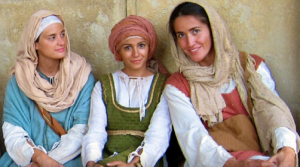
During a recent conversation with my granddaughter, the subject arose regarding the androcentric essence of the Bible and the god who inspired it, a god who—so my granddaughter opined—relegates women to a lower or lesser status. In response, I would argue that the Bible is replete with women and, indeed, illustrates the fundamental and profound part they play in God’s Word. In Proverbs, for example, Solomon’s exposition on Wisdom uses the feminine pronoun throughout (v. 8:1-4). Additionally, as Alice Camille points out in her article “Naming the 333 Women in the Bible,” [1]“Humanity’s binary gender design as male and female reflects in some mysterious way the nature of God. While sharing a common humanity, the man and the woman are unique and complementary rather than identical. This complementarity, in turn, reflects a facet of God’s own nature.” Camille’s insightful assertion is, in fact, supported by Scripture: “So God created mankind in his own image, in the image of God he created them; male and female he created them” (Genesis 1:27). [2] Lastly, I submit that the Bible must be read within its cultural context, and that, in God’s divine wisdom, it is presented to us in a manner that humankind—given our vastly limited, subjective perspective—may better understand and relate to in terms of the concept of God. Clearly, God has no gender. God is Spirit (John 4:24), and operates from an eternal framework—as opposed to we humans, who operate within worldly boundaries and a here-and-now perspective. Put another way, wrapping our human brains around the idea of an omniscient creator is beyond our capacity. And so we rely on faith, which is God’s gift to us, built on the inspired or “breathed” Word of God (2 Timothy 3:16), and presented to us in language we can relate to.
Naming the 333 women in the Bible
Alice Camille
While some biblical women are nameless and silent figures, others are movers and shakers in their own rights.
The Catholic canon of the Bible contains 73 books. Three of them bear women’s names: Ruth, Judith, and Esther. These three texts also make the actions of women their central concern. I consider them Exhibits A, B, and C in the argument against the Bible being a hopelessly sexist document. Why male editors gave the green light to the inclusion of these texts is the real mystery.
Full disclosure: Not all compilers did OK them, which is why Judith isn’t in Jewish Bibles and holds a subcanonical status in those Protestant Bibles that do include it. Ruth’s story appears first. As she’s the 28-times-great-Nana of Jesus, we find her tale charming. It’s also biblically revolutionary. Writers for children tend to observe the Charlie Brown rule: If you don’t kill off the parents straightaway, render them irrelevant to the action. The writer of Ruth uses the same pitiless rule in liberating the landscape for her women’s tale, killing off three husbands in the first paragraph. That leaves three women to make three self-determining choices.
It’s a brilliant solution to a vexing problem: How do women engage the life quest in contexts in which men call the shots? With the men dearly departed, Orpah returns to her father’s house, hoping to marry again. Ruth chooses to remain with her mother-in-law Naomi. Echoing Abraham’s tale, Ruth leaves father and fatherland behind, migrating to the foreign city of Bethlehem to adopt Naomi’s people and religion as her own. Of course it’s a love story, with marriage to Boaz the happy ending. But the essential love in the story is the bond between Ruth and Naomi. The men are narrative props, and Boaz is—surprise!—Ruth’s reward for taking the quest, not the other way around.

